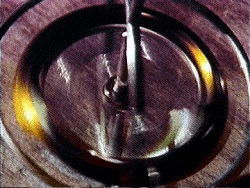Bill Seaman
Biography
Bill Seaman's associative collages of image, music and language function as audiovisual poems. A composer and poet who writes the electronic music and lyrical text that propel his evocative imagery, Seaman structures his works like musical compositions. Shooting primarily in Super-8 film, he achieves a dreamlike distortion of image in the transfer of film to video, and then further alters the visuals with such devices as stop-frame editing and slow motion.
The spoken word is integral to the aural, visual and conceptual texture of these works. Chanted or sung in a hypnotic delivery by Seaman, his elusive verbal texts are litanies of multiple wordplays, double entendres and associative phrases — poetic reflections that transform and extend the meaning of the impressionistic visuals.
In Seaman's layered juxtapositions of sound, language and image, observations of the ordinary — landscape, architecture, household objects — take on metaphorical significance and a heightened intensity of mood. Originally a performance artist, Seaman brings a highly personal stylization to his lyrical interpretations of the rhythms of the everyday.
Seaman was born in 1956. He received a B.F.A. from the San Francisco Art Institute and a Master of Science in Visual Studies from Massachusetts Institute of Technology. Honored by the Awards in the Visual Arts in 1987, he has also been awarded grants by the National Endowment for the Arts, the Massachusetts State Council on the Arts and Humanities, and the Contemporary Art Television (CAT) Fund. Seaman has taught video and computer graphics at the Rhode Island School of Design and the Massachusetts Institute of Technology. His works have been exhibited widely at festivals and institutions including the World Wide Video Festival, The Hague; The Institute of Contemporary Art, Boston; Bonn Videonale; San Sebastian Film and Video Festival, Spain; International Center of Photography, New York; Australian Video Festival and the Berlin Film Festival. He had major solo exhibitions in 2001 at The Daniel Langlois Foundation, Cinémateque, Québecoise, Montreal, Canada; and at the Canadian National Gallery, Ottowa, Canada.
